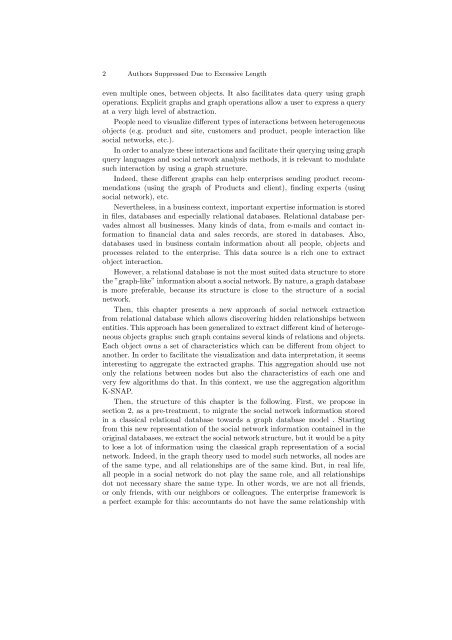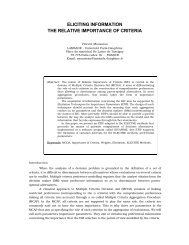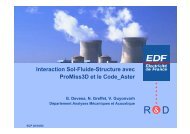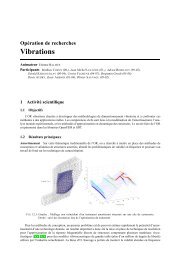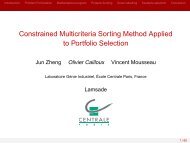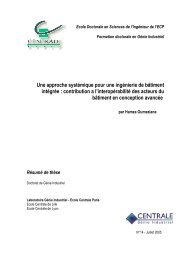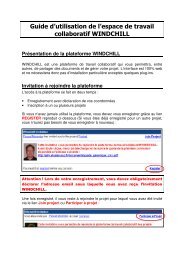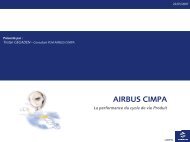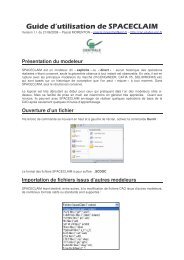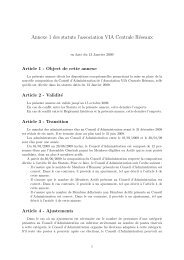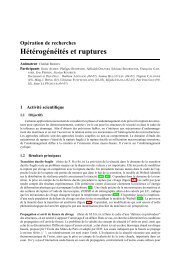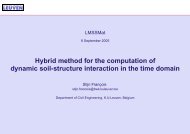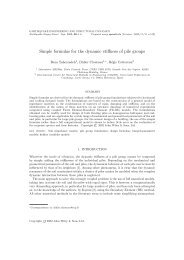View - Ecole Centrale Paris
View - Ecole Centrale Paris
View - Ecole Centrale Paris
Create successful ePaper yourself
Turn your PDF publications into a flip-book with our unique Google optimized e-Paper software.
2 Authors Suppressed Due to Excessive Lengtheven multiple ones, between objects. It also facilitates data query using graphoperations. Explicit graphs and graph operations allow a user to express a queryat a very high level of abstraction.People need to visualize different types of interactions between heterogeneousobjects (e.g. product and site, customers and product, people interaction likesocial networks, etc.).Inordertoanalyzetheseinteractionsandfacilitatetheirqueryingusinggraphquery languages and social network analysis methods, it is relevant to modulatesuch interaction by using a graph structure.Indeed, these different graphs can help enterprises sending product recommendations(using the graph of Products and client), finding experts (usingsocial network), etc.Nevertheless, in a business context, important expertise information is storedin files, databases and especially relational databases. Relational database pervadesalmost all businesses. Many kinds of data, from e-mails and contact informationto financial data and sales records, are stored in databases. Also,databases used in business contain information about all people, objects andprocesses related to the enterprise. This data source is a rich one to extractobject interaction.However, a relational database is not the most suited data structure to storethe”graph-like”informationaboutasocialnetwork.Bynature,agraphdatabaseis more preferable, because its structure is close to the structure of a socialnetwork.Then, this chapter presents a new approach of social network extractionfrom relational database which allows discovering hidden relationships betweenentities. This approachhas beengeneralized toextract differentkindofheterogeneousobjects graphs: such graph contains several kinds of relations and objects.Each object owns a set of characteristics which can be different from object toanother. In order to facilitate the visualization and data interpretation, it seemsinteresting to aggregate the extracted graphs. This aggregation should use notonly the relations between nodes but also the characteristics of each one andvery few algorithms do that. In this context, we use the aggregation algorithmK-SNAP.Then, the structure of this chapter is the following. First, we propose insection 2, as a pre-treatment, to migrate the social network information storedin a classical relational database towards a graph database model . Startingfrom this new representation of the social network information contained in theoriginaldatabases,weextractthesocialnetworkstructure,butitwouldbeapityto lose a lot of information using the classical graph representation of a socialnetwork. Indeed, in the graph theory used to model such networks, all nodes areof the same type, and all relationships are of the same kind. But, in real life,all people in a social network do not play the same role, and all relationshipsdot not necessary share the same type. In other words, we are not all friends,or only friends, with our neighbors or colleagues. The enterprise framework isa perfect example for this: accountants do not have the same relationship with


